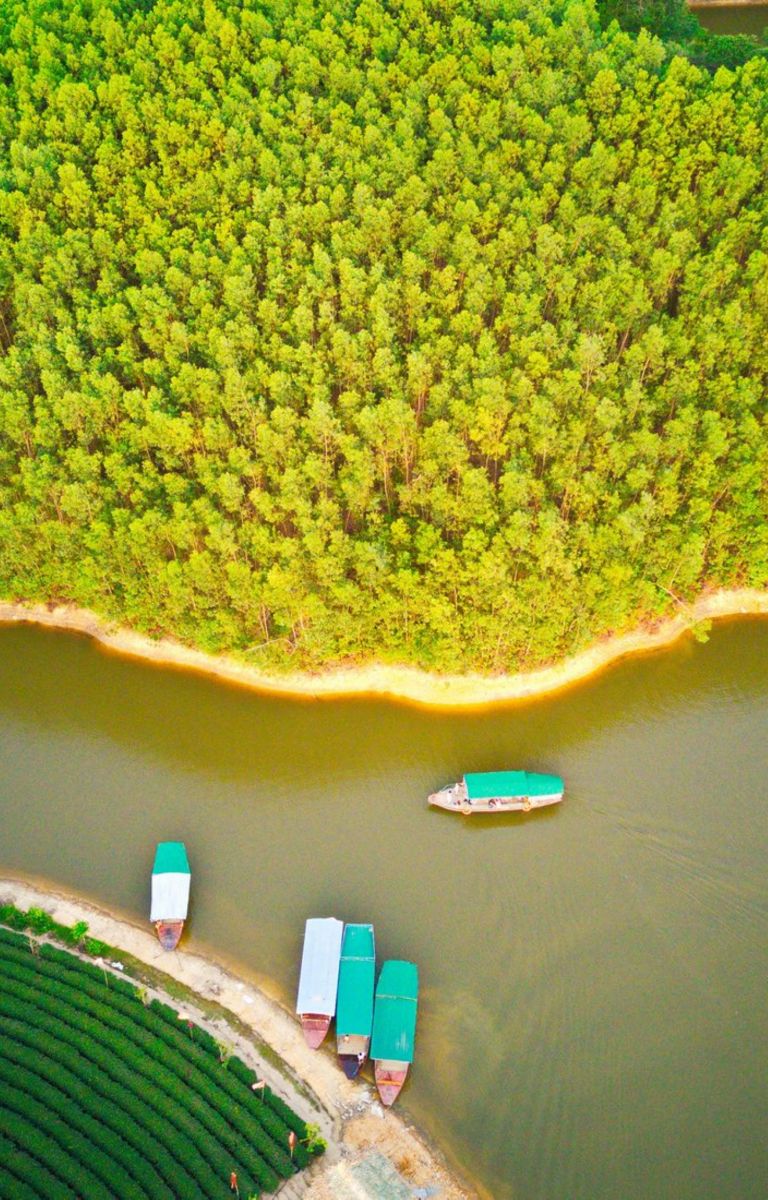

Nghe An Province is one of Viet Nam’s most important biodiversity hotspots. It contains 1,235,755 hectares of pristine tropical rainforests, mountainous ecosystems, mangrove forests and other habitats, including the UNESCO designated Western Biosphere Reserve. Nghe An is home to 20 ethnic groups who account for 11 percent of the province’s population. They rely on the forests for their livelihoods and culture, and manage almost a fifth of the area’s forests. By preventing the destruction of the reserve and restoring the area’s degraded forests, local communities are contributing to global efforts to fight climate change.
Nghe An by numbers
-
Total area of landscape: 1,648,977 hectares
-
Forest cover: 58 percent
-
Western Nghe An Biosphere Reserve: 1,299,795 hectares
-
Population: 3,037,467
-
Poverty rate: 7.5 percent

Entry points for investment to achieve the SDGs
-
Stimulating equitable business partnership between local communities and the private sector
-
Introducing local forest-based products to markets and supporting local people's livelihoods by developing inclusive forest-based business opportunities for women and poor people
-
Fostering multi-stakeholder collaboration for disaster responsiveness and climate change adaptation
The Nghe An landscape in Viet Nam and the people and biodiversity it shelters are threatened by deforestation, natural disasters and weak forest governance. Empowered local communities must lead the sustainable development and the protection of Nghe An, and at RECOFTC we have the vision, skills, relationships and experience to support their leadership. Since 1998, we have helped the people of Viet Nam build their capacity to secure their land tenure rights, govern and manage their lands and improve their livelihoods. Today, there are tremendous new opportunities in Nghe An to further support local communities, government, civil society and private sector to overcome these threats. We offer three entry points for action that will foster prosperous communities and a thriving landscape by capitalizing on the ambitions of communities, our experience in Viet Nam and the work of many other organizations. Through our investments in Nghe An we can contribute directly to achieving the Sustainable Development Goals of the United Nations 2030 Agenda. By 2030, we can help Viet Nam meet its climate pledge to reduce 2.4 million tons of carbon dioxide in Nghe An, support 237 households in seven villages to receive forest titling certifications, foster sustainable management of 1,300 hectares of mountain ecosystems, strengthen the capacity of 500 people to adapt to climate change and pilot two new sustainable business models for equitable partnerships between communities and the private sector. And by securing land rights, we can enable Viet Nam to foster good forest governance and mitigate and adapt to climate change.
Challenges
Climate
- Viet Nam is the world's fastest growing carbon polluter. Population growth, deforestation and forest degradation exacerbate natural disasters in highland and coastal areas.
- Local communities that are most vulnerable to climate-related disasters have low capacity to adapt to the effects of climate change.
Livelihoods
-
Rural communities face high rates of out-migration due to unemployment. Sixty-seven percent of those who leave their communities are between thh ages of 15 and 24.
-
Income generating opportunities are limited by market barriers and low capacity to implement policy and programs.
Governance
- Government officials have limited capacity to enforce laws and protect the landscape, often resulting in non-inclusive and abusive land allocation policies.
- The low capacity of forestry officials limits the planning and implementation of forest governance laws.
- Non-state actors have limited voice in policy discussions and other forest governance procedures.
Social inclusion
- The poverty rate in the highlands exceeds 20 percent.
- Climate change has put pressure on forest production and weakened the value chain for timber and non-timber forest products.

Partners
Local communities
- Twenty ethnic groups make up 11 percent of the population and manage a fifth of the landscape's forests.
Government
- Government leads management of natural resources—protection, production and special use of 56 percent of forests
- Twenty-two percent of forest areas are under commune-level People's Committees and have yet to be allocated to local communities
- The government adopted Nghe An's Provincial Redd+ Action Plan and the Western Nge An development plan.
Private sector
- Forty-four wood processing companies and 11 pulp and paper producers manage more than 200,000 hectares of forest for raw material production.
- More than 7,000 small traders engage in timber and non-timber forest production.
Civil society
- Vinh University and other organizations in Nghe An conduct research and training to support stakeholders in the sustainable management of the landscape.
Our experience in Nghe An and Viet Nam
In Nghe An, we are restoring the forested landscapes and fostering equitable partnerships between the private sector and local communities through a forest landscape restoration initiative called FLOURISH. RECOFTC is well established in Viet Nam. In 1998, the Government of Viet Nam signed our charter. Through our work and presence in Viet Nam we have become a leading voice in community forestry, recognized and trusted by local communities, government agencies, local authorities and civil society. We have:
- Raised awareness about community forestry in seven provinces
- Trained 874 people, more than 30 percent women, in the sustainable management of natural resources
- Provided legal support for revisions of laws on harvesting timber and non-timber forest products and implementing of policy on Payment of Forest Environmental Services and the REDD+ Action Plan
- Supported establishment of platforms for local communities to share information, concerns and experiences with community forestry




